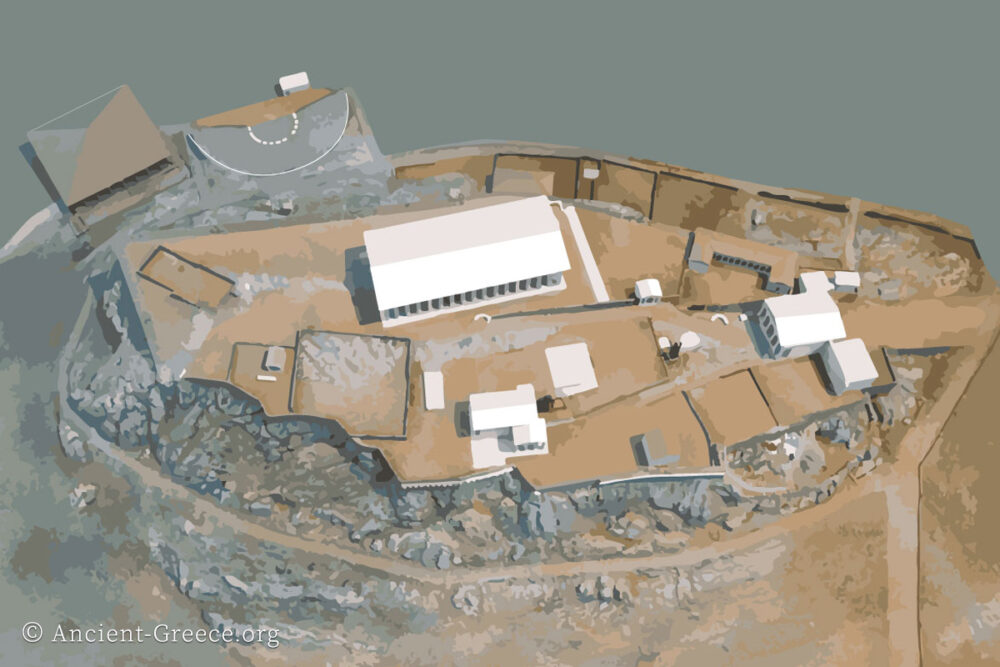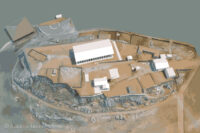
On this page:
The votive offerings continued at the Acropolis during the classical era (489 – 323 BCE). The Athenians built a small temple of Athena Nike right next to the Propylaia after winning a war against Boeotia and Chalcis.
The Persian Wars
In 499 BCE Athens participated in the defense of the Ionian colonies in Asia Minor against the Persian Empire, and were among those who sacked Sardis, ensuring thus certain retaliation by the great Asian empire.
The events of the late 6th c. BCE led the transition of Athens into the Classical period. The carefree attitude of Archaic art became more introspective and self-aware as Athens led Greece in the transition to the Classical era.

In 490 BCE the Athenians surprised everyone by winning the battle of Marathon, about 42 Km North of Athens, against the invading Persian army.
After the victory at Marathon the Athenians began construction at the Propylaia and the building of another temple next to the old temple of Athena Polias (fertility goddess). This new temple was dedicate to the Athena Pallas, or Parthenos (virgin) and is known as the first Parthenon.
Only the limestone foundation and few marble columns were put in place before the Persians captured Athens in their second attack ten years later n 480 BCE. They burned the city to the ground and destroyed the temples of the Acropolis.
Shortly later in 480 BCE, under the leadership of Themistokles the Athenians defeated the Persian fleet in the naval battle of Salamis. Next year, in 479 BCE they defeated the Persian army at Plataea with a coalition other Greek city/states, putting an end to Persian empire’s ambitions to annex Greece.
The Athenians buried the remains of their monuments and statues that were destroyed by the Persians around the Acropolis rock, and began the rebuilding process once again.
During this time Piraeus was developed into a major port, and Athens was fortified with walls that encircled the city and protected the roads to its port Piraeus (long walls).
The Athenians after these events enjoyed high prestige in the Greek world and it became the leader of an alliance of the Greek states, the Delian League, which was formed to protect Greece from further Persian attacks.
Under the leadership of Kimon the Athenians built a massive fortification at the South end of the Acropolis, which also acted as a retaining wall to support the expansion of the rock. These modifications resulted to the level top we see today. The Clepsydra (the subterranean fountain at the north slope of the Acropolis known as “thief of water” was constructed during this time, as was the monumental bronze statue of Promachos Athena which was made by the sculptor Pheidias.
Pericles
Perikles, son of Xanthipos became the leader of Athens after Kimon’s death in 450 BCE, and during his leadership Athens enjoyed unprecedented prosperity and extraordinary social, political, and cultural development.
The era of Pericles is known as the Golden Eon of Athens.
With funds appropriated from the donation of the Delian League states, Pericles embarked on an impressive building program that adorned Athens with a splendid array of buildings and art, the likes of which influenced art and architecture for the next two millennia, and are still admired today.
The sculptor Pheidias was chosen to oversee the construction of a multitude of temples and sculptures under a master plan, and the best architects and artists were hired to complete the project. Iktinos, Kalikrates, and Mnesikles were the architects who designed the monuments under the supervision of the sculptor Pheidias.
The construction plan included the Parthenon and the Propylaia on the Acropolis, the Odeion of Perikles, the Long Walls and the Hephestion in Athens, as well as the temple of Poseidon at Sounion.
Peloponnesian War
In 431 BCE constructions at the Acropolis and elsewhere was interrupted by the beginning of the Peloponnesian war, which found Athens and Sparta fighting a conflict that lasted until 404 BCE and was fought in the extended theater of the Mediterranean.
Most of the Athenian and Spartan allies got involved in the war at one time or another, and many states that were resentful of Athenian hegemony took advantage of the chaos in order to revolt against the Delian League alliance.
The war effort was punctuated by the plague that afflicted Athens between 430 and 427 BCE killing one third of its population.
During this turbulent time construction at the Acropolis continued at a slower pace, and the Erechtheion and few other auxiliary buildings was completed during the Peloponnesian war.
Ultimately, Athens suffered a humiliating defeat after a series of miscalculations and a disastrous expedition against Syracuse in Sicily in 413 BCE. Construction on the Acropolis and around Attica stopped when the city fell to the Spartans in 404 BCE and the democratic government was replaced by a group of tyrants.
After the Peloponnesian war
After the defeat in the Peloponnesian war the Athenians did not stay idle for long. A democratic government quickly replaced the Tyranny imposed by the Spartans, but even though construction at the Acropolis resumed, it never reached high levels again.
Athens rebounded and remained an important intellectual and economic center, but soon was confronted with more challenges by another Greek state: Macedonia.
Alexander the Great of Macedonia made certain that his conquest eclipsed all previous Greek achievements. In the process, Hellenic culture expanded and flourished away from the traditional center of Athens and the other city-states of the Classical era.
This History of the Acropolis is divided into the following chapters:
- Introduction
- Prehistoric Acropolis
- Archaic Acropolis
- Classical Acropolis
- Post-Classical Acropolis
- Modern Acropolis
Related Pages

